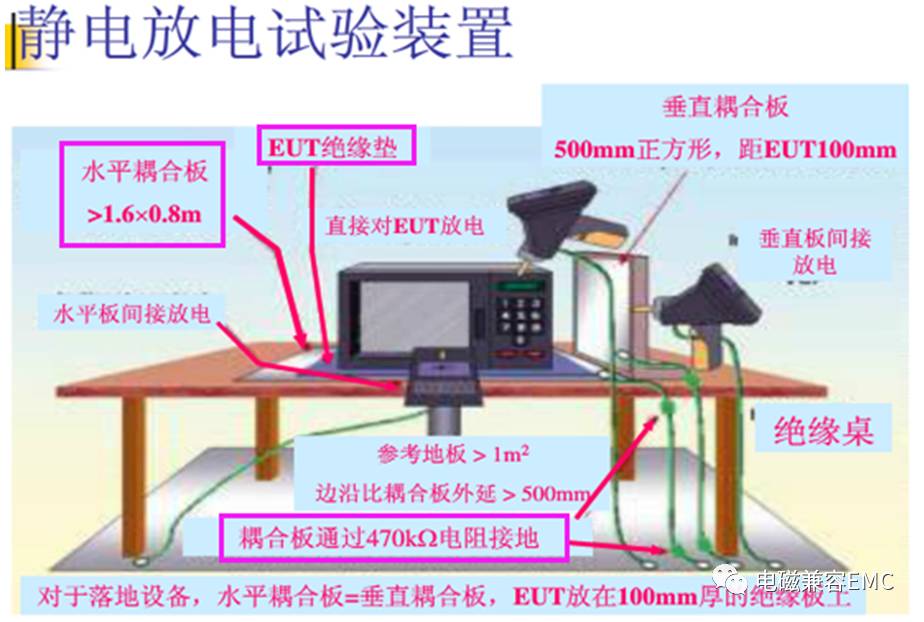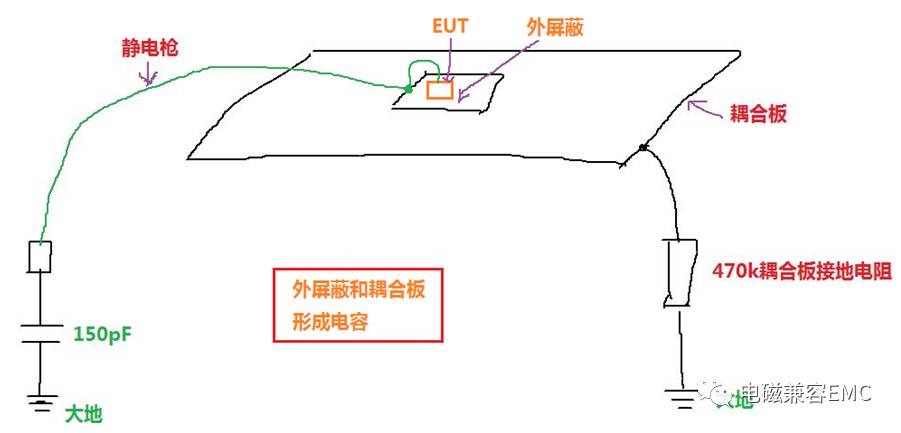Previously, all of them were in contact with large equipment. Last year, the company was preparing to launch some small handheld devices that could not be grounded with anti-static grounding. When I first started to contact such equipment, I was very confused. For a long time, I didn’t think about the electrostatic discharge path when such equipment was static. Now write down some of my own ideas and share them with you. It is possible that my thoughts are wrong. I welcome discussion and correction.

We simplified the circuit of the abstract discharge experimental device and simplified the EUT into a copper sheet (electrostatic discharge is a common mode interference, regardless of whether the PCB in the EUT is a few layers, and treats it as a whole here.):

The copper and horizontal coupling plates on the PCB in the EUT form a capacitor:

Electrostatic discharge is actually a process of charging the "EUT and the coupling plate to form a capacitor". When charging, a voltage drop occurs in the place where there is impedance.
So how do you protect the EUT from static electricity? If the device does not have exposed metal, we can increase the insulation of the device's outer casing and prevent the generation of electrostatic discharge. If the device has exposed metal, we should try to ensure the integrity of the PCB ground plane, reduce the impedance on the ground plane, and increase if necessary. The outer shield protects the EUT by the fact that the outer shield has a lower impedance and most of the static electricity is discharged along the outer shield.
The working mechanism of electrostatic shielding outside the handheld device is as follows:

The outer shield replaces the EUT, and a capacitor is formed between the coupling plate, and the electrostatic discharge is shielded by the outer shield instead of the EUT, thereby protecting the EUT.
Although the EUT and the outer shield are connected together, the static electricity only collects on the surface of the metal, that is, the static electricity only accumulates on the outer surface of the outer shield, and there is no static electricity on the EUT.
In the above figure, if you want to electrostatically protect the upper part of the EUT, there should be an external shield on the top of the EUT. The outer shield preferably wraps the entire EUT to protect all sides of the EUT. In general, static electricity is required on each side of the EUT.
A TPU Screen Protector made of the super toughness of the honeycomb structure. Its unique ultra-soft properties allow it to cover the most complex curves and contours in a device.
The self-healing design of the Hydrogel Screen Protector can protect the display screen of the device from damage, leave no air bubbles, and maintain the sensitivity of the touch screen. Advanced anti-fingerprint and dust- and oleophobic overlays keep your screen smudge- and dirt-free. This overlay is also important in providing maximum touch sensitivity for improved high-speed glide and optimal touch response.
The optical transparency of the Hydrogel Film is more than 90%, showing you the most original screen color and bringing the most realistic visual experience.
If you want to know more about the product information of the Hydrogel Screen Protector for Xiaomi, please click the product details to view the parameters, model, picture, price and other information of the Xiaomi Screen Protector.
Whether you are a group or an individual, we will do our best to provide you with accurate and comprehensive information about Hydrogel Screen Protectors!
Srceen Protector For Xiaomi,Hydrogel Screen Protector For Xiaomi,TPU Screen Protector For Xiaomi,Hydrogel Film for Xiaomi
Shenzhen Jianjiantong Technology Co., Ltd. , https://www.jjtscreenprotector.com